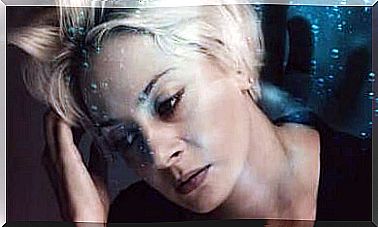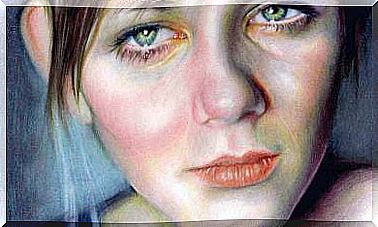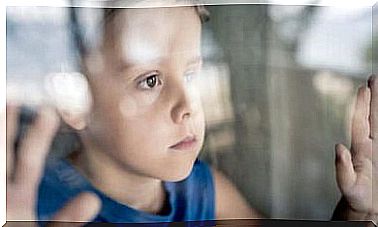Mixed Anxiety-depressive Disorder: Definition, Causes And Treatment
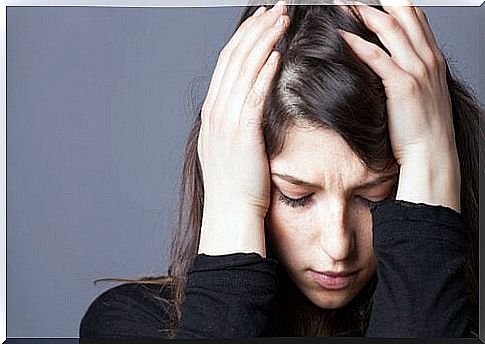
Mixed anxiety-depressive disorder has generated great controversy in its design and has not been included in all existing diagnostic classifications. It is not that its existence is unrecognized, but it has sometimes been viewed as a depressive disorder with secondary anxiety characteristics.
Symptoms of anxiety and depression are present in mixed anxiety-depressive disorder. But none of them clearly predominates or is of sufficient intensity to warrant a separate diagnosis.
This disorder manifests as a mixture of comparatively mild symptoms that are commonly seen in routine visits. Its prevalence is even higher in the general population.
The combination of depressive symptoms and anxiety leads to a significant deterioration in the functioning of the affected person. However, those who oppose this diagnosis have argued that the availability of this diagnosis discourages clinicians from taking the time necessary to take a full psychiatric history. A story which in turn helps to differentiate true depressive disorders from anxiety disorders.

The essential feature of this disorder is persistent or recurring dysphoric mood that lasts at least 1 month. This state of mind is accompanied by additional symptoms of identical duration, which include at least four of the following:
These symptoms cause significant clinical discomfort or deterioration in social, occupational or other important area of the person’s activity. On the other hand, mixed anxiety-depressive disorder should be excluded when the symptoms are due to the direct physiological effects of a substance or a medical illness. Or if, at any time, the individual meets the diagnostic criteria for major depressive disorder, dysthymic disorder, anxiety disorder or generalized anxiety disorder.
The diagnosis also does not need to be made if the criteria for any other anxiety or mood disorder are met at the same time, even if they are in partial remission.
It is also necessary that the picture of the symptom could not be better explained by the presence of another mental disorder. Most of the initial information on this entity was gathered in primary care settings, where the disorder appears to be more common; it probably also has a higher prevalence among outpatients.
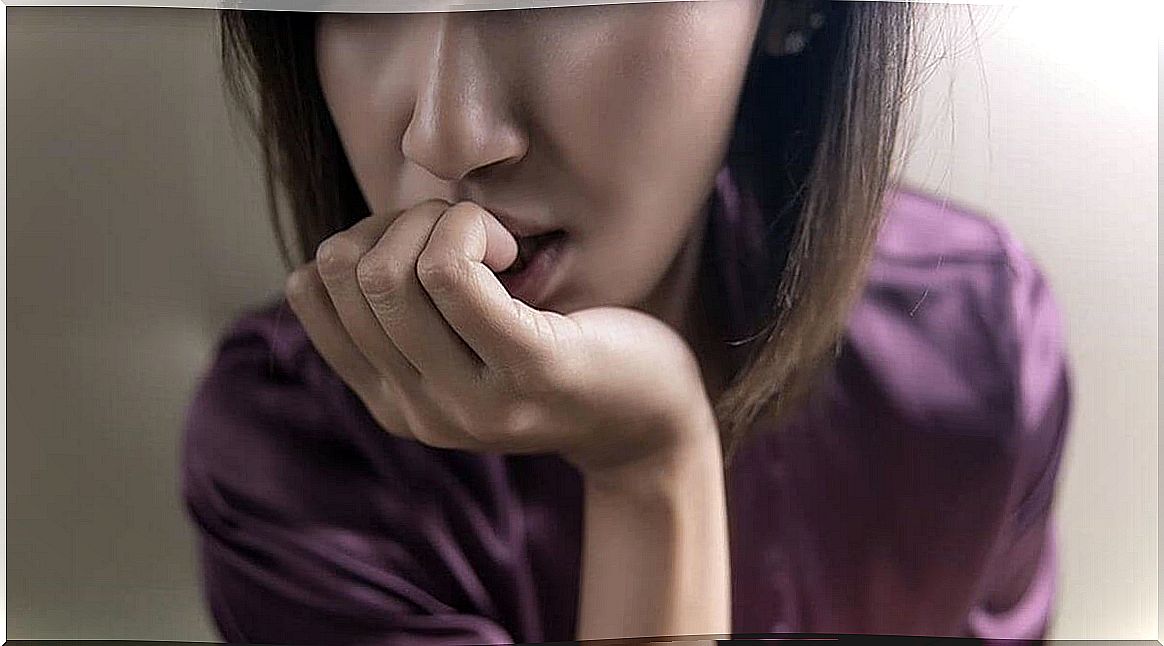
Some researchers have reported that 20% to 90% of all patients with panic disorder have episodes of major depressive disorder. These data suggest the very high frequency of coexistence of symptoms of depression and anxiety that do not meet the diagnostic criteria for depressive or anxiety disorders.
However, there are no official epidemiological data to date. In this regard, some researchers have estimated that the prevalence of this disease in the general population is 10%, and that in primary care it increases to 50%. Conservative estimates suggest a prevalence of 1% in the general population.
What produces this disorder?
Four experimental lines suggest that anxiety symptoms and depressive symptoms are linked to identified causes.
First, several researchers have found similar neuroendocrine causes in depressive and anxiety disorders. These include the flattening of the response of cortisol to adrenocorticotropic hormone, the flattening of the growth hormone response to clonidine, and the flattening of the thyroid stimulating hormone and prolactin responses. to the hormone releasing thyrotropin.
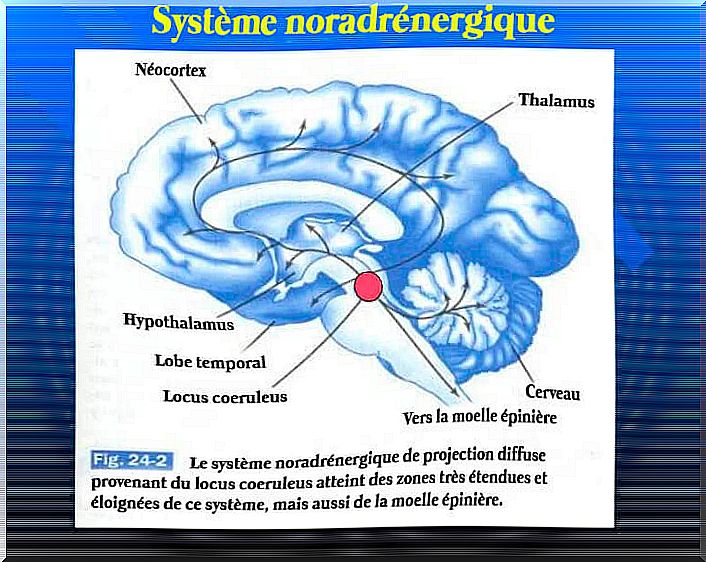
Specifically, these studies have shown that depressed patients with distress disorder who experience an anxiety attack have elevated concentrations of norepinephrine MHPG metabolites in urine, plasma, or cerebrospinal fluid.
As with other anxiety and depressive disorders, serotonin and GABA may also be associated with causing mixed anxiety and depressive disorder.
Third, numerous studies have shown that serotonergic drugs, such as fluoxetine and clomipramine, are useful in the treatment of depressive disorders and anxiety disorders. Finally, several family studies have presented data indicating that anxiety and depressive symptoms are genetically linked, at least in some families.
Evolution and prognosis
Based on current clinical information, it appears that initially patients may have the same likelihood of predominant symptoms of anxiety or predominant symptoms of depression, or a proportional mixture of them.
During the illness, anxiety and depressive symptoms alternate in their predominance. The prognosis is not yet known, although separate depressive and anxiety disorders tend to become chronic without adequate psychological treatment.
Since there are no adequate studies comparing the treatment modalities of mixed anxiety-depressive disorders, clinicians tend to provide the appropriate treatment based on the presentation of symptoms, their severity, and their previous experience with the different symptoms. treatment modalities.
Psychotherapeutic approaches may have a limited time, such as cognitive or behavioral therapy. However, some clinicians use a less structured psychotherapeutic approach, such as introspective psychotherapy.
Pharmacological treatment
Pharmacological treatment of mixed anxiety-depressive disorders is prescribed with anxiolytics, antidepressants, or both. Among anxiolytics, there is some evidence that the use of triazolobenzodiazepines (eg, alprazolam) may be indicated, due to its efficacy in the treatment of depression associated with anxiety.
Substances that affect the 5-HT receptor, such as buspirone, may also be listed. Among antidepressants, serotonergics (eg, fluoxetine) may be very effective in treating mixed anxiety-depressive disorder.

In all cases, the treatment of choice for this type of pathology is cognitive-behavioral psychotherapy. On the one hand, it is the patient who, in the first place, must reduce his level of physiological activation. This is achieved through breathing techniques (eg diaphragmatic breathing) and relaxation techniques (progressive muscle relaxation, autogenous training, attention, etc.).
Second, it is necessary for the patient to improve his mood. This can be done in different ways. Behavioral activation therapy can be very effective in this regard. It is a question of the patient resuming his previous level of activity. To do this, he is encouraged to perform enjoyable activities, either by gradually resuming them or by participating in new ones.
Third, a psychoeducational phase is useful. In this phase, the patient is explained what is happening to him and why. This is to give him some basics about the characteristics of anxiety and depression so that he normalizes his experience.
Later, it may be necessary to change certain beliefs or thoughts that may cause the problem to persist. This can be done using the technique of cognitive restructuring.
As we have seen, mixed anxiety-depressive disorder does not have a specific entity in some diagnostic systems. But its prevalence is high in routine consultations. It is a disorder that can be treated but which, if not treated in time, can become chronic.
Derogatis, LR, & Wise, TN (1996). Depressive and Anxiety Disorders in Primary Care. Barcelona: Martinez Roca.
Miguel Tobal, JJ (1990). Anxiety In J. Mayor and JL Pinillos (Eds.). Treatise on general psychology. (Vol.3). Motivation and emotion Madrid: Alhambra.
